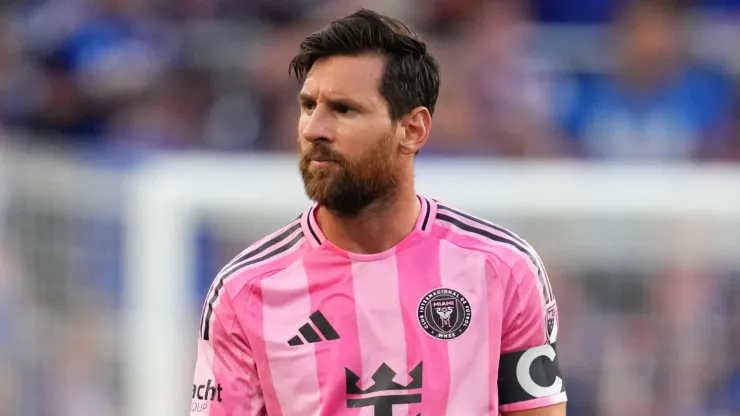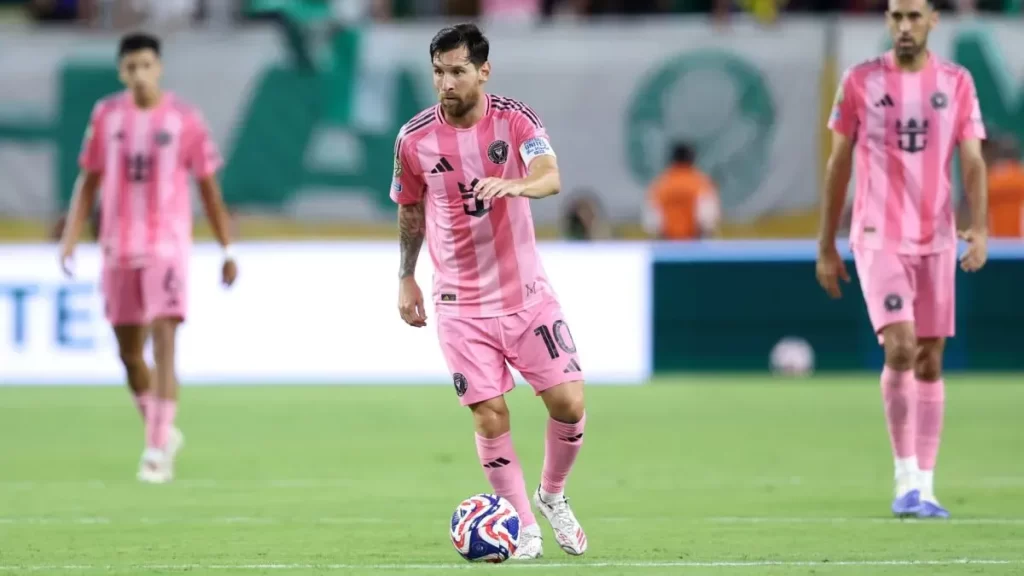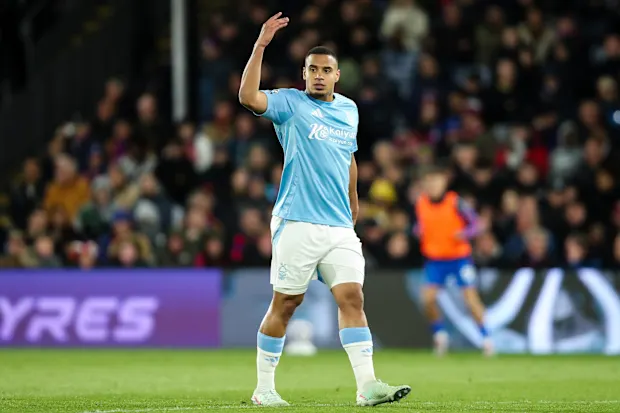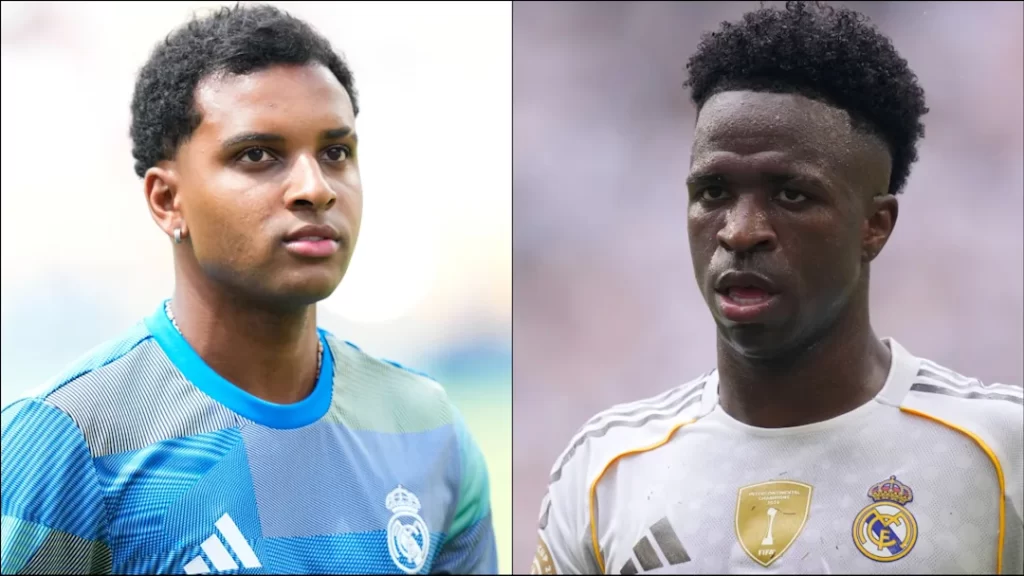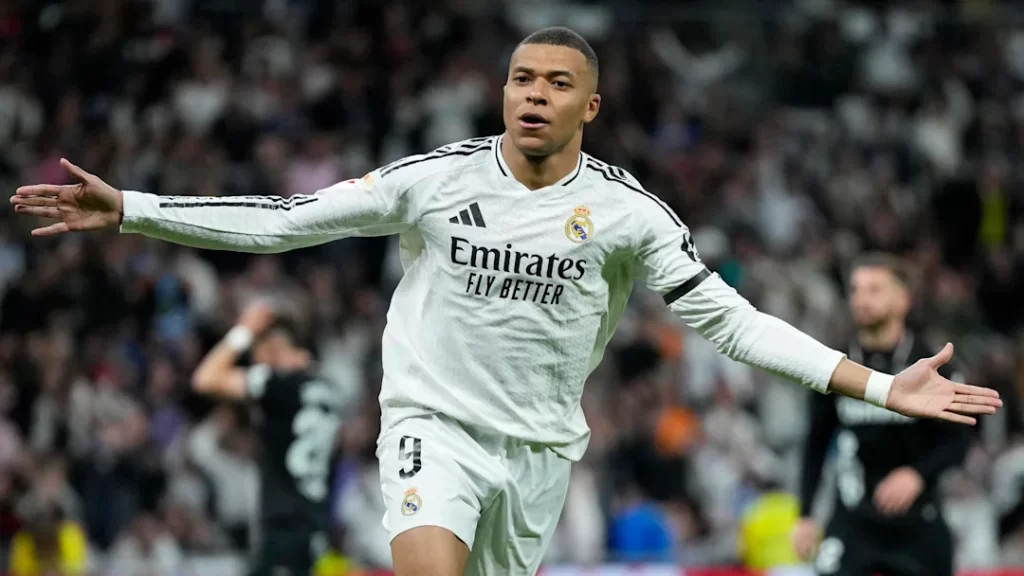1. Introduction
Football, once a simple game with clear rules and straightforward tactical approaches, Cheap Football Shirts has evolved over the decades into a highly complex sport characterized by innovative strategies and groundbreaking technologies. While rigid formations like the 2-3-5 dominated in the early years of the 20th century, today it is dynamic systems, data-driven analyses, and digital tools that define modern football.
But why is this evolution so significant? On the one hand, it reflects social and scientific progress: football is no longer just a game, but an interdisciplinary field that combines sports science, medicine, computer science, and even psychology. On the other hand, this development is changing the way the sport is perceived – by fans, players, and officials alike.
In this article, we will examine the key tactical and technological milestones of the past decades, analyze their interrelationships, and take a look into the future. How have systems like counter-pressing or tools like video assistant referees (VAR) revolutionized football? And what role do artificial intelligence and big data already play today – or in the coming years? These questions are the focus of our discussion.
Modern football reflects our times: faster, more connected, and more data-driven than ever before. But despite all the innovations, the game’s fascination remains unbroken – and that is precisely what makes its evolution so exciting.
2. Tactical Revolutions
Modern football is a game of chess on grass – but while simple formations like the 4-4-2 or the classic World Cup system were once sufficient, today’s game requires unprecedented tactical flexibility. This development can be divided into three central trends:
From Catenaccio to Positional Play
In the 1960s, *Catenaccio*, with its defensive rigidity, shaped European football. But with the rise of *Tiki-Taka* under Pep Guardiola (from 2008 at FC Barcelona), it became clear: possession and spatial control were the new weapons. Guardiola’s system was based on precise short passes and asymmetrical use of space, with players like Xavi and Iniesta using intelligent space to counter the opposition’s pressing.
At the same time, Jürgen Klopp developed an aggressive alternative with his *counter-pressing*: Instead of controlling the ball, the opponent was attacked immediately after losing possession – a tactic that made football more physical and faster-paced.
Hybrid systems and fluid formations
Today, rigid systems no longer dominate, but rather *adaptive formations*. One example is the transformation of the 4-3-3 into a 3-2-5 in attack, as perfected by Manchester City under Guardiola. The full-backs move into the half-spaces, while the wingers spread the lines – a dynamic that overwhelms defenders.
The *inverted fullback* concept (e.g., with Trent Alexander-Arnold) also shows how traditional positions are being reinterpreted: Defensive wingers become playmakers who orchestrate the game from deep.
Data as a tactical game-changer
Modern coaches like Julian Nagelsmann use *real-time data* to make adjustments during the game. By analyzing running routes, passing networks, and pressing intensity, the opponent’s weaknesses can be identified. One example: The German national team used a *counter-pressing-based 3-4-3* at the 2024 European Championship, which was tailored to the opponent’s weak back defense using AI-supported scouting reports.
The role of the individualists
Despite all the systematic approach, there is still room for *creative soloists*. Players like Kevin De Bruyne or Jamal Musiala prove that tactical discipline and individual brilliance are not a contradiction – on the contrary: their ability to play *against the system logic* often makes them decisive.
Interim conclusion: The tactical evolution of football is a story of increasing complexity – but it hasn’t made the sport sterile; on the contrary, it has opened up new spaces for creativity.
3. Technological Milestones
Modern football is no longer just a game of human instincts and physical abilities – it has been fundamentally transformed by technological innovations. This revolution can be divided into three central strands of development that have made the game fairer, more precise, and more scientific.
1. The Video Assistant Referee (VAR) and semi-automatic offside detection
The introduction of the *Video Assistant Referee (VAR)* in 2018 marked a turning point in referee culture. Suddenly, serious errors could be corrected through video evidence – for example, in penalty or offside situations. But VAR remained controversial: Critics complained about the interruptions to the flow of play and the subjective interpretation of ”clear errors.”
In response, FIFA developed semi-automatic offside detection (first used at the 2022 World Cup). AI-supported camera systems and sensors in the balls now determine the offside position in real time with millimeter precision – a technology that minimizes sources of error but still sparks discussions about the ”soul of the game.”
2. Performance diagnostics and wearable technologies
Modern footballers are now connected athletes. GPS trackers in jerseys measure running distance, sprint speed, and heart rate, while accelerometers in shin guards detect overload risks. Clubs like RB Leipzig use this data to:
– Design individualized training (e.g., load management for players returning from injuries),
– Uncover tactical weaknesses (e.g., insufficient pressing distances),
– Objectify transfer decisions (through scouting platforms such as Wyscout or StatsBomb).
Real-time biometrics is particularly revolutionary: At the 2024 European Championship, smart watches were used for the first time, reporting fatigue levels directly to the bench – a step toward personalized game management.
3. Artificial Intelligence and Virtual Training Environments
AI is making inroads in two areas:
– Match analysis: Algorithms such as Google’s Player Tracking (used by Tottenham Hotspur) automatically break down opponent videos into tactical patterns and predict passing probabilities.
– Virtual Reality: Players practice set pieces via VR headsets – such as penalties against a digitally reconstructed goalkeeper (used by Bayern Munich since 2023).
An example of the merging of both worlds is Manchester City’s *”Project Red Zone”*: An AI system that uses historical data to determine when a player is most effective at finishing in the penalty area – and implements these findings in VR training.
4. Sustainable Technologies
Football is also driving innovation off the pitch:
– *Energy-independent stadiums* (such as the Allianz Arena with its solar façade),
– *Biometric ticketing systems* (facial recognition to curb hooliganism),
– *Recyclable artificial turf* (developed for the 2026 World Cup in North America).
Critical voices, however, warn against *over-technologicalization*: Will VAR deprive referees of their authority? Is data fetishism leading to the loss of creative playing culture? These debates accompany technological evolution – but one thing is clear: today’s football would be unthinkable without them.
4. Synergy of Tactics and Technology
Modern football is no longer a field where tactics and technology go separate ways – they have merged into an inseparable unit. This symbiosis has not only made the game more precise and scientific, but has also opened up entirely new strategic dimensions.
1. Data-driven game adjustments in real time
Today, *live data streams* flow directly into tactical decisions. One example is Manchester City’s *edge computing* system, which analyzes opponent patterns during the game and sends adjustment suggestions to the coaching bench within seconds. This enabled City to identify the opposing pressing trap around Toni Kroos in the 2024 Champions League semifinal against Real Madrid and neutralize it by deliberately bypassing the ”Kroos zone.”
*Individualized player management* has also been revolutionized: Fatigue levels determined by wearables lead to substitutions down to the minute. An AI-supported *Dynamic Substitution System* will be tested for the first time at the 2026 World Cup, which automatically suggests players whose running profiles best match the current score.
2. AI as a tactical assistant coach
Artificial intelligence has redefined opponent preparation. Tools like IBM’s Tactical Watson (used by Bayer Leverkusen) analyze thousands of hours of opponent videos and automatically generate:
– Weakness profiles (e.g., ”Right-back tends to make mistakes on high crosses”),
– Pressing signatures (spatial patterns of when a team wins the ball),
– Set piece simulations (VR training against the opponent’s virtual goalkeeper).
A milestone was the German national team’s ”Predictive Formation Engine” at the 2024 European Championship, which used machine learning to predict how opponents would react to system changes – thus enabling the legendary 3-4-3 to 4-2-4 transformation in the quarterfinals against Spain.
3. Hybrid training methods
The boundaries between real and virtual training are blurring:
– VR tactical rooms: Players like Jude Bellingham use *mixed reality glasses* to recap game situations in 3D – such as the opponent’s running paths during counterattacks.
– Biometric feedback loops: Sensors in jerseys correct posture in real time during shots (used by Erling Haaland to optimize his finishing).
– Data visualization: Clubs like Liverpool FC project passing networks directly onto the training field to give players a physical experience of spatial patterns.
4. Ethics and limits of technologization
But the fusion of tactics and technology also raises questions:
– Loss of intuition: Critics like Jürgen Klopp warn of a *robotization* of the game when creativity is replaced by algorithms.
– Data protection: The storage of health data (e.g., heart rate patterns) leads to debates about players as ”transparent athletes.”
– Cost inequality: Only financially strong clubs can afford high-end tools – a development that threatens the global competitive balance.
5. The new era of ”Smart Football”
Despite all the controversies, the synergy is irreversible. It has turned football into a *dynamic ecosystem* in which:
– Players are individually supported through technology (e.g., personalized training plans via app),
– Coaches are transforming from ”gut feeling” to *data architects*,
– Fans are becoming more deeply immersed in the game through enhanced broadcasting (e.g., live tactical overlays).
5. Future Perspectives (2025 and Beyond)
Football is on the cusp of a new era in which technological and tactical innovations will evolve at an unprecedented pace. While some trends are already evident today, others are only just emerging. But one thing is certain: the football of the future will be even more data-driven, personalized, and connected – while also facing fundamental ethical and sporting challenges.
1. Artificial Intelligence as a Strategic Game Changer
By 2030, AI will not only function as an analysis tool, but also as an *active assistant coach*. Systems like *Deep Football Mind* (under development at FIFA) are designed to:
– Predict game progression (e.g., probabilities of scoring opportunities based on player fatigue),
– Suggest automated formation changes (adapted to opponent behavior),
– Generate personalized game instructions (e.g., at the push of a button on players’ smartwatches: ”Press higher in Zone 14”).
But this development raises questions: Are coaches losing their decision-making authority? Is football becoming an ”algorithmic game” in which human improvisation is secondary?
2. Hyper-personalization in training and scouting
– Genome-based talent development: Clubs like Red Bull Salzburg are already experimenting with DNA analyses to identify potential injury risks or athletic strengths at an early stage.
– Neuroathletic training: EEG-guided exercises are intended to optimize players’ cognitive processing speed (pilot project at FC Bayern).
– Metaverse academies: Young talents from Africa or South America train in virtual spaces with top European coaches – a revolution for global equal opportunities.
3. Sustainability and new forms of play
– Climate-neutral competitions: UEFA is planning a ”net-zero” Champions League starting in 2030 with CO2-compensated travel and organic stadium turf.
– Short-format revolution: 60-minute matches with effective playing time (as tested at the 2026 World Cup) could make football more TV-friendly.
– Hybrid fan experiences: Augmented reality (AR) allows spectators in the stadium to view tactical overlays or player statistics in real time.
4. Ethical dilemmas and regulatory hurdles
– Data ownership: Who owns players’ performance data – the clubs, associations, or the athletes themselves?
– AI doping: Can algorithms be considered ”digital doping agents” if they provide illicit advantages?
– Digital divide: Is a two-tier society between ”tech giant” clubs and financially weaker clubs looming?
5. The unpredictable constant: The human soul of the game
Despite all the technology, football remains an emotional phenomenon. The biggest challenge will be to find a balance between:
– Scientific precision (through data) and
– Unpredictability (through human ingenuity).
6. Conclusion
Modern football has evolved over the past decades from a comparatively simple sport into a highly complex, data-driven, and technologically interconnected system. This evolution is no coincidence, but rather reflects the social, scientific, and economic progress of our time. But while tactics and technologies have made the game more precise, faster, and more strategic, the essence of football remains the same: It is and remains a game of passion, unpredictability, and human brilliance.
The Balance Between Progress and Tradition
On the one hand, tactical innovations – from counter-pressing to hybrid formations – and technological milestones – such as VAR, AI analytics, and wearables – have revolutionized football. They have made it fairer, more scientific, and more entertaining. On the other hand, we face fundamental questions:
– How much technology can football tolerate before it loses its soul?
– Who actually benefits from these developments – the big clubs with their budgets, or the sport as a whole?
– Can data and algorithms ever replace the magic of an unexpected moment, a brilliant idea, or an emotional decision?
The answer probably lies in symbiosis: The best teams of the future will be those that understand how to combine high-tech tools with human creativity – as pioneers like Pep Guardiola and Julian Nagelsmann are already demonstrating.
Football as a mirror of society
The development of sports is also a reflection of our times:
– Globalization: Digital scouting networks and virtual training methods are democratizing talent development.
– Sustainability: Climate-neutral stadiums and CO2 compensation demonstrate that football is also taking responsibility.
– Digitalization: The merging of the real and virtual worlds (metaverse, AR fan experiences) is changing how we consume football.
But despite all the changes, one thing remains constant: the fascination of the game. Whether on the soccer field or in a high-tech stadium – in the end, it’s still about getting the ball into the net and thereby triggering emotions.
Outlook: Where are we headed?
Football will continue to evolve – but not solely through technology. The biggest challenge is to ensure progress doesn’t become an end in itself. The best solutions will be those that:
– Serve the sport rather than dominate it,
– Keep players and fans at the center,
– Bring the global football community together rather than divide it.
Ultimately, the evolution of football is a story of adaptation – to new insights, to societal changes, to the expectations of spectators. But as long as the spark ignites when a player dribbles past an opponent or scores a last-second goal, the core of football remains unchanged: It is the most beautiful game in the world – wcfootballkits.co.uk with or without algorithms.
